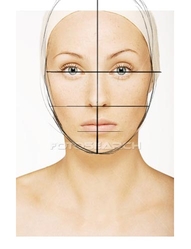Portrait

- What
- Portrait
- When
- 10/31/2019, 9:00 AM – 10:00 AM
Resources Power Point :
Power point : Proportion and Human FaceWeb Site Resources: Amedeo Modigliani Biography, Book : “Exploring Art” , pg. 56-57 – McGraw Hill Glen Support/Connections/Resources
Looking at Painting on the web site (www.ket.org/painting )
Extension Idea
Have students research self-portrait painting. Identify what influenced it and how it is different from portrait painting. In what ways is it the same?
Assessment and Scoring Guide
Prompt: Students use the videos on realism and expressionism as the motivator for creating their own mixed-media self-portraits. They include symbols to represent important characteristics of their lives and personalities. They demonstrate the three types of aesthetics (imitational, expressive, and formal) in their work.
Evaluation Sheet
Grade Level: 6- 7- 8
Questions: To guide the instruction delivered to the students. Write the answers on the back of the portrait paper or in a separated piece of paper.
1. What is a portrait? What is a self-portrait? How are they different?
2. When did portraiture enter into art history?
3. What causes the eyes to be the dominant feature in a portrait?
4. How will you organize your composition using the design principles of contrast, repetition, contrast, proportion, and pattern?
5. What is the purpose of your portrait?
6. How will you fit the parts of this mixed-media self-portrait together to form a complete expression or mood?
7. Did you use proportions?
8. Did you use exaggeration or distortions?
Vocabulary: art elements: color (tint/shade), texture, space (positive and negative), value
principles of art: balance (asymmetry), emphasis, contrast, proportion, movement, repetition
portrait, exaggeration, distortion, medium, proportion, portrait, self-portrait, expression,
character, personality, identity, symbol.
Poster in Spanish for ELL students. Translation with google for ELL students.
Using Proportion to Draw a Portrait
Artists have been creating a portrait since ancient times. You can find clues about historical and political influences of a culture by exanimating its artwork.
What you will learn
Using traditional and experimental techniques, you will learn to observe and you will create a portrait using pencils, paint, pastels. Your portrait should accurately emphasize the expressive facial features of your subject. You may draw the rest of the person accurately or experiment with loose lines in the manner of Modigliani, Van Gogh, Picasso’s work. You will organize lines, colors, shapes and texture to emphasize your subject’ personality. The portrait should communicate both physical and emotional characteristics of your model.
What you will do
Warm up:
1. Make a list of words that describe you. Include your favorite color and favorite animal, characteristics of your family, where you are from, what you like to do, your interests, your friends, what music you like, etc. Describe images, textures, colors, etc. that would represent these words next to them. You are creating symbols with which to describe yourself.
Using a mirror, draw your self-portrait (head and shoulders). Here are some hints on facial proportions. Every day we practice with a part of the human face. 10 minute a day.
Then
1. Look again the portraits in the classroom or the one you have chosen as your best example artist. Notice how the eyes divide the oval shape of the head in half. All part of the face look like they are the right size in relation to each other. There accurate proportion when you are painting or drawing a face. The top of the head or hair, the forehead, nose, and the mouth and the chin are equally spaced apart. Look at your own face or those of your classmates. Van Gogh painted the face realistically, but he painted the arms using very simple shapes.
2. Choose a family member, a friend, or a celebrity to draw. If possible have that person sit for you so that you can use direct observation to make several sketches for your drawing. If the actual person is not available, select a photograph or picture from a magazine.
3. Next, make several quick sketches of your subject. Make a list of at least three personality traits of the person you will draw. Choose one you would like to communicate in your portrait. Experiment with the principles of emphasis and proportion. For example, emphasis can be shown by use of color or by exaggerating the size of a feature. A smile can be enlarged to emphasize a cheerful or outgoing personality. Lips could be colored brightly and drawn in a twisted grin to depict a mischievous person.
4. Select your best sketch and plan your composition. Lightly transfer your best sketch to your sheet of white drawing paper. Think about how you will organiz3e colors, lines shapes and textures to emphasize your subject’s personality. Choose either pencil, charcoal, or oil pastels to complete your portrait. Analyze with the teacher your portrait in progress, using critical attributes. Step away from your work periodically and view it from a short distance to see if you are capturing the personality trait as you had planned.
5. Title your work and display it with those of your classmates.
6. Display all the portraits to the school galley.
7. Some of the portrait will be sent to the Cultural Events in Town.
Evaluating your Work
Describe:
Who is the person in your portrait?
Explain why you choose that person?
What media did you use to create the portrait?
What element of art did you use to convey the personality of you subject?
ANALYZE
How did you experiment with the elements to emphasize the expressive facial features of your subject?
Reflective Thinking
Analyze the original artwork of your classmate on your table. From conclusions about formal properties and intent. Does their work convey the psychological and emotional characteristic of the model? Is the end result what the artist intended? Discuss with the peer next to you and write the answer on the note book. Explain the classroom your conclusion.
